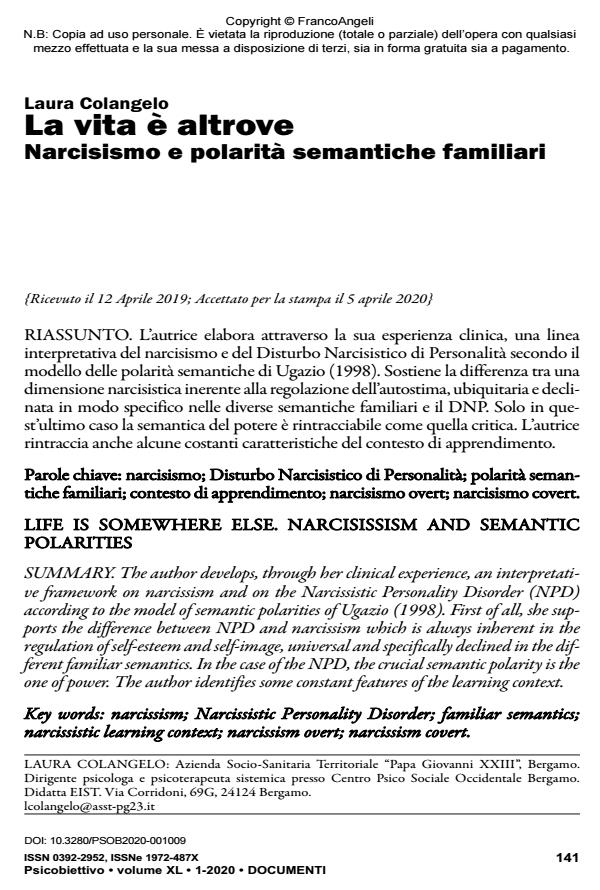Life is somewhere else. narcisissism and semantic polarities
Journal title PSICOBIETTIVO
Author/s Laura Colangelo
Publishing Year 2020 Issue 2020/1
Language Italian Pages 18 P. 141-158 File size 184 KB
DOI 10.3280/PSOB2020-001009
DOI is like a bar code for intellectual property: to have more infomation
click here
Below, you can see the article first page
If you want to buy this article in PDF format, you can do it, following the instructions to buy download credits

FrancoAngeli is member of Publishers International Linking Association, Inc (PILA), a not-for-profit association which run the CrossRef service enabling links to and from online scholarly content.
The author develops, through her clinical experience, an interpretative framework on narcissism and on the Narcissistic Personality Disorder (NPD) according to the model of semantic polarities of Ugazio (1998). First of all, she supports the difference between NPD and narcissism which is always inherent in the regulation of self-esteem and self-image, universal and specifically declined in the different familiar semantics. In the case of the NPD, the crucial semantic polarity is the one of power. The author identifies some constant features of the learning context.
Keywords: Narcissism; Narcissistic Personality Disorder; familiar semantics; narcissistic learning context; narcissism overt; narcissism covert.
- Il ruolo del coinvolgimento della famiglia nel processo terapeutico con un paziente narcisista Laura Colangelo, in TERAPIA FAMILIARE 136/2025 pp.19
DOI: 10.3280/TF2024-136002
Laura Colangelo, La vita è altrove. Narcisismo e polarità semantiche familiari in "PSICOBIETTIVO" 1/2020, pp 141-158, DOI: 10.3280/PSOB2020-001009